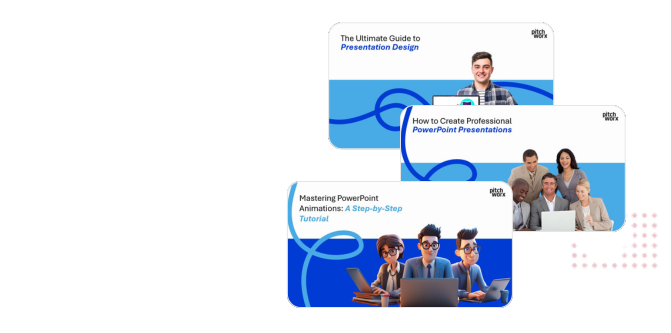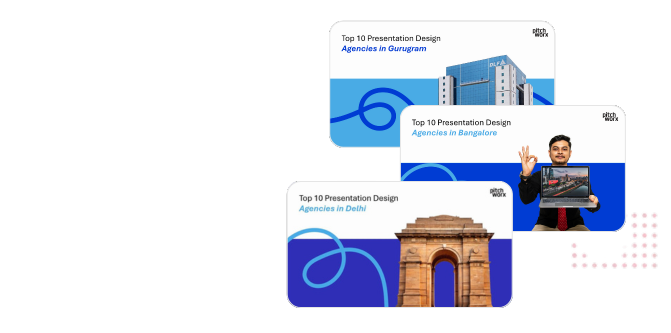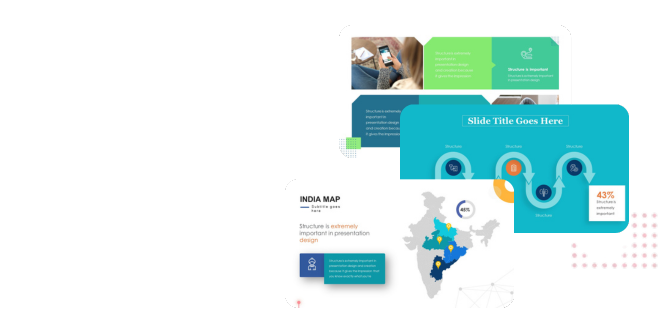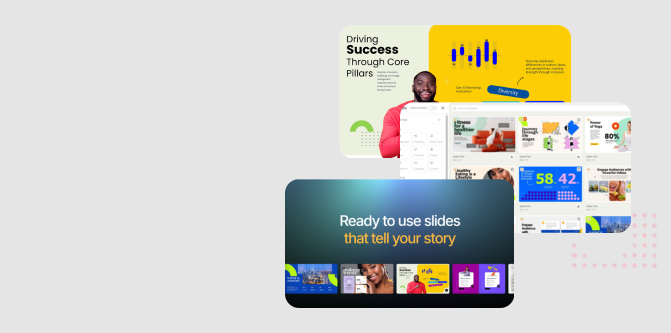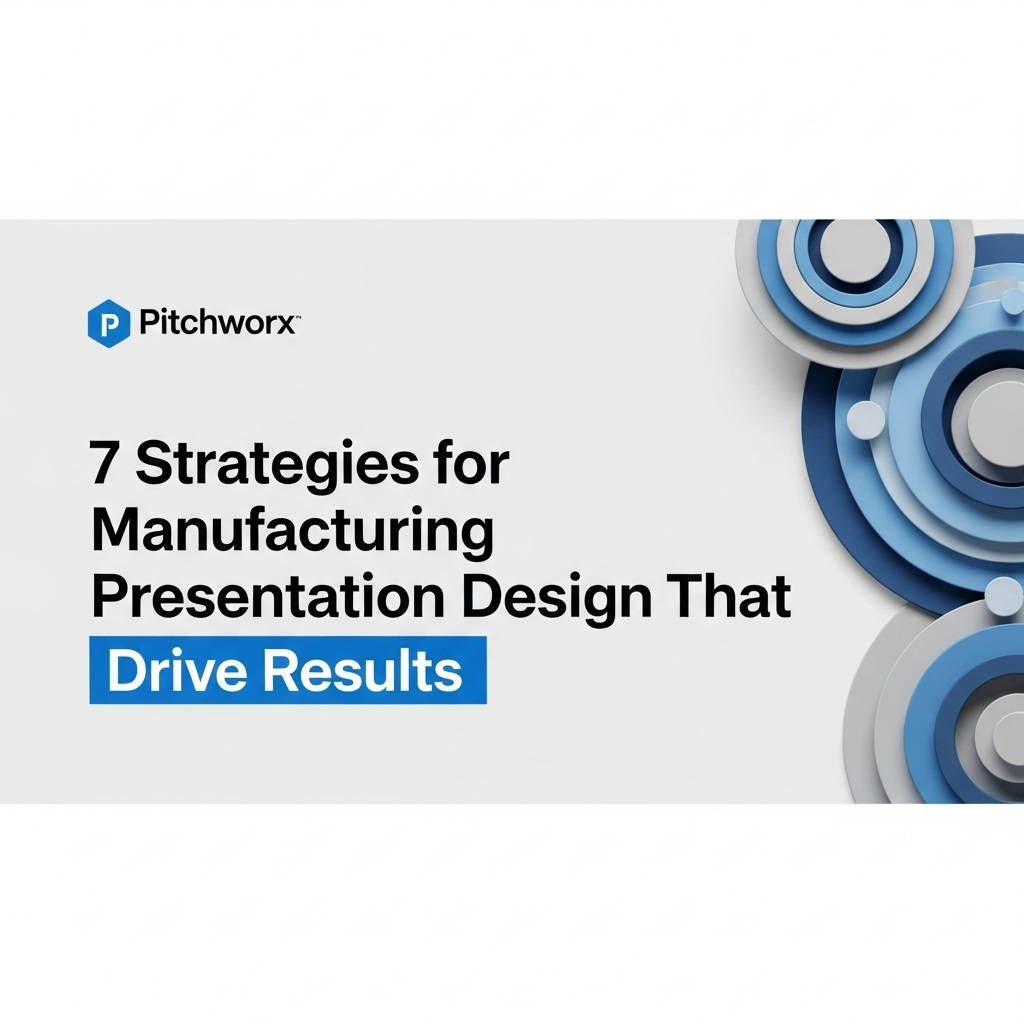A shift supervisor stands before a team of machine operators. On the screen is a slide crammed with dense text and a low-resolution schematic, meant to explain a critical new lockout/tagout procedure. Eyes glaze over. A question about torque specifications goes unanswered because the data is buried in a footnote. In a typical office, this is just a boring meeting. On the plant floor, it’s a safety incident waiting to happen. This is the core challenge of manufacturing presentation design: creating communication tools where clarity isn’t just a goal, it’s a requirement for safety, efficiency, and compliance.
Generic corporate presentation templates, designed for boardrooms and sales pitches, fail spectacularly in the industrial world. The stakes are higher, the environments are more demanding, and the audience’s needs are fundamentally different. From complex technical specifications to life-or-death safety protocols, the information shared in a manufacturing setting must be understood instantly and retained perfectly. This requires a specialized approach that blends instructional design, data visualization, and a deep understanding of the operational realities of the factory floor.
Quick Answer
Manufacturing presentation design is the practice of creating clear, effective visual communication for industrial environments, covering safety, technical data, and training. According to the National Safety Council’s Injury Facts, a worker is injured on the job every seven seconds, making clear communication vital. To be effective, this design must:
- Simplify complex schematics and data for immediate comprehension.
- Use standardized visual cues for safety and compliance.
- Be tailored for diverse audiences, from engineers to frontline workers.
Table of Contents
- The High Cost of Poor Communication on the Plant Floor
- Why Standard Presentation Tactics Fail in Manufacturing
- The Core Principles of Effective Manufacturing Presentation Design
- A Strategic Approach to Technical and Data-Heavy Decks
- Designing for Engagement in Safety and Compliance Training
- Integrating Your Brand While Maintaining Universal Clarity
- Frequently Asked Questions
- Conclusion
The High Cost of Poor Communication on the Plant Floor
Ineffective communication in a manufacturing setting isn’t just an inconvenience; it’s a direct threat to the bottom line and, more importantly, to worker safety. The consequences of a misunderstood instruction or a poorly visualized safety warning are immediate and severe. As data from the National Safety Council consistently shows, preventable workplace injuries are a significant operational burden. The cost isn’t just measured in compensation claims; it’s a cascade of hidden expenses.
Consider the ripple effects of a single incident caused by a misread technical diagram:
- Production Downtime: The entire line may need to be halted for incident investigation and equipment repair, leading to lost output and missed deadlines.
- Quality Control Failures: A misunderstood specification can lead to an entire batch of products being manufactured out of tolerance, resulting in scrap, rework, and wasted materials.
- Compliance Risks: Failure to properly communicate and document safety or environmental procedures can lead to hefty fines from regulatory bodies like OSHA or the EPA.
- Reduced Morale: When employees feel that training is confusing or that safety is not clearly communicated, it erodes trust and morale, which can impact overall productivity and employee retention.
Ultimately, poor presentation design acts as a bottleneck for crucial information. It creates a barrier between well-intentioned management and the frontline workers who execute complex tasks every day. Investing in clarity is a direct investment in operational excellence.
Why Standard Presentation Tactics Fail in Manufacturing
The default PowerPoint or Google Slides template is built for an entirely different context. It assumes a quiet room, a captive audience, and information that is conceptual rather than instructional. This assumption breaks down completely in an industrial environment.
Root Cause 1: Diverse and Demanding Audiences
A single presentation might need to be understood by a Ph.D. in chemical engineering, a machine operator with 30 years of experience, a newly hired temp, and a quality control auditor. This requires content that is technically precise yet universally understandable. Language barriers and varying literacy levels add another layer of complexity that standard, text-heavy slides simply cannot address.
Root Cause 2: Extreme Information Density
Manufacturing is built on data. Process and Instrumentation Diagrams (P&IDs), Standard Operating Procedures (SOPs), and quality metrics are incredibly dense. Attempting to paste a complex schematic onto a slide or list dozens of steps in bullet points results in cognitive overload. The human brain can’t process that much information at once, especially when it’s poorly organized visually.
Root Cause 3: The Environment Itself
Presentations are often delivered in less-than-ideal conditions: on a noisy factory floor, in a poorly lit breakroom, or on a small tablet screen. Intricate details, subtle color variations, and small fonts that look fine on a designer’s monitor become completely illegible. The design must be robust enough to communicate effectively despite these environmental challenges.
About PitchWorx
With 13+ years of presentation design experience and 150,000+ slides created, PitchWorx is an ISO 27001 certified agency trusted by Fortune 500 companies across global markets. Our expertise lies in transforming complex information into clear, engaging visual narratives that drive results in high-stakes environments.
The Core Principles of Effective Manufacturing Presentation Design
To overcome these challenges, a specialized design philosophy is needed. It’s less about decoration and more about strategic information architecture. This forms the foundation of our presentation design service, focusing on tangible outcomes like improved safety and comprehension.
Principle 1: Uncompromising Clarity
Clarity is the ultimate goal. This is achieved through aggressive simplification and strong visual hierarchy. It means breaking down a complex process into a series of simple, sequential steps. It involves using icons and universal symbols in place of text wherever possible. White space is not empty space; it’s a tool to guide the viewer’s eye to the most critical information on the slide. Every element must have a purpose, and anything that doesn’t contribute to understanding must be removed.
Principle 2: Adherence to Standards
In manufacturing, colors are not just for branding; they often have specific meanings defined by ANSI, ISO, or OSHA standards. For example, red for danger/emergency stop, yellow for caution, and green for safety. A skilled manufacturing presentation designer knows these standards and ensures that the visual language of the presentation is consistent with the visual language of the facility itself. This consistency reinforces safety protocols and reduces the risk of misinterpretation.
Principle 3: Designing for Retention
It’s not enough for the audience to understand the information during the presentation; they must remember it and apply it on the job. We incorporate principles from learning science, such as chunking information into small, digestible pieces. According to research published in Deloitte’s “Meet the modern learner” report, this “microlearning” approach fits the limited time and attention spans of modern workers. We use progressive reveals (animation) to present information sequentially, preventing overload and improving focus on the current point.
A Strategic Approach to Technical and Data-Heavy Decks
Presenting technical data is one of the biggest hurdles. The engineer who created the schematic understands its complexity, but the goal is to make it understandable to someone who didn’t. This requires a process of “visual translation.” Instead of simply pasting a CAD drawing onto a slide, we deconstruct it.
Our process involves identifying the single most important takeaway for the audience and then redesigning the visual to highlight that specific piece of information. This could involve:
- Grayscaling and Highlighting: Fading non-essential parts of a diagram into the background and using a bold color to highlight the specific component being discussed.
- Exploded Views: Using animation to show how parts of a machine assemble or disassemble, making the relationship between components clear.
- Callouts and Annotations: Adding clear, legible labels that point directly to key features, replacing tiny, unreadable text from the original schematic.
For machinery with intricate moving parts or complex spatial relationships, static 2D slides often fall short. This is where technologies like our interactive 3D models can transform comprehension, allowing users to rotate, zoom, and explore a piece of equipment from any angle.
| Aspect | Traditional Data Slide | Effective Technical Visualization |
|---|---|---|
| Data Density | Full schematic pasted, overwhelming the viewer with irrelevant detail. | Simplified view focusing on only the relevant components for the task. |
| Key Takeaway | Audience must search the slide to find what’s important. | The main point is instantly clear through color, size, and callouts. |
| Visual Hierarchy | Flat and uniform; all information competes for attention equally. | Strong hierarchy guides the eye from the most critical element to supporting details. |
| Cognitive Load | Very high, leading to confusion and low retention. | Low, as information is presented sequentially and simply. |
Designing for Engagement in Safety and Compliance Training
Safety training is the most critical application of presentation design in manufacturing, yet it’s often the most poorly executed. A “death by PowerPoint” approach with endless bullet points about regulations is a recipe for disengagement. The goal is not just to inform but to influence behavior. To achieve this, we shift from passive information delivery to active learning scenarios.
Instead of a slide listing the dangers of improper lifting, we create a visual scenario: “What’s wrong with this picture?” This encourages active problem-spotting rather than passive listening. For accident case studies, we use visual storytelling to show the chain of events that led to the incident, making the consequences feel real and memorable. A short, well-produced safety demonstration video embedded in the presentation is infinitely more impactful than a slide of text describing the same procedure.
Gamification elements, like simple quizzes or “choose your own adventure” style branching scenarios for emergency procedures, can also dramatically increase engagement and knowledge retention. The key is to make the learner a participant, not just a spectator.
Integrating Your Brand While Maintaining Universal Clarity
A common mistake is to apply corporate branding guidelines inflexibly to all presentations. While your standard corporate decks for investors or sales have strict brand rules, operational and safety decks must prioritize clarity and universal standards above all else. This doesn’t mean branding is irrelevant, but it requires a more nuanced approach.
Our team works with clients to develop a modified template specifically for operational use. This template might incorporate the company logo and primary brand font for titles, but the body of the presentation will use highly legible, sans-serif fonts. Most importantly, the color palette is adapted. The brand’s primary blue might be used for accents, but it will never be used in a way that could be confused with a standard safety color like blue for “information.” This ensures the presentations feel professional and company-aligned without ever compromising the instant readability of critical safety and technical information.
Related Services
Frequently Asked Questions
How do you handle confidential technical information and intellectual property?
We take data security very seriously. PitchWorx is an ISO 27001 certified agency, which means we adhere to the highest international standards for information security management. All projects are covered by strict non-disclosure agreements (NDAs), and our internal processes are designed to protect your sensitive schematics, process details, and proprietary data.
Can you create presentations for multilingual teams or workers with low literacy?
Absolutely. This is a core part of effective manufacturing presentation design. We prioritize a “visual-first” approach, using icons, clear diagrams, and photography to convey meaning with minimal text. For multilingual needs, we design the layout to accommodate text expansion and work with professional translation services to ensure accuracy for each language.
What is the typical process for creating a manufacturing presentation?
Our process is collaborative and structured. It begins with a discovery phase to understand your audience, objectives, and technical content. We then move to scripting and storyboarding to structure the narrative. Once the structure is approved, our design team creates the visual assets. The process concludes with client revisions and final delivery of all source files.
How much does professional manufacturing presentation design cost?
The cost varies based on several factors, including the number of slides, the complexity of the technical information to be visualized, and the need for custom assets like 3D models or video. We provide a detailed, itemized quote after our initial discovery call, ensuring transparency and no surprises.
Will we be able to update the presentations ourselves in the future?
Yes. We believe in empowering our clients. We provide fully editable source files (e.g., PowerPoint .pptx) and can develop a custom template based on the design. This allows your team to easily update text, data, or images for routine changes without needing to engage a designer each time.
How can we measure the ROI of investing in better presentation design?
ROI can be measured through key operational metrics. We advise clients to track lagging indicators like a reduction in safety incidents, fewer production errors, or lower scrap rates post-training. Leading indicators can also be measured, such as improved scores on post-training comprehension quizzes and positive feedback from employees on the clarity of the materials.
Conclusion
Shifting from generic slides to strategic manufacturing presentation design is not an aesthetic upgrade; it’s a fundamental improvement to your operational infrastructure. By prioritizing clarity, adhering to standards, and designing for true comprehension, you create a safer, more efficient, and more compliant workplace. Clear communication dismantles the barriers between critical information and the people who need it most, turning presentations into powerful tools for driving performance on the plant floor.
The next time you prepare a safety briefing, a technical training module, or a process update, look at it through the eyes of your audience. Is the key takeaway instantly obvious? Is it clear, concise, and unambiguous? If not, it’s an opportunity to build a more resilient operation, one clear slide at a time.
Ready to elevate your operational communications? Our presentation design services help businesses across global markets. Explore our past successes in our case studies.




